November 23, 2010
The Misfit Battleships
When one thinks of battleships, what leaps to mind? The gleaming Iowas, usually. Others would think of the hulking Yamato-class, still the largest battlewagons ever built. Or perhaps the menacing Bismarck and Tirpitz, pride of the Kriegsmarine would hold primacy over all. If you have a sense of history, classes like the Nevada/Pennsylvania, with their cage masts and one of which, the Arizona, is now one of the US military's most hallowed sites. Or the first of them all, the Dreadnought.
And then there's me. I'm a weirdo, because my favorite battleship class is one that few people know or (historically) care about. You see, I'm a fan of the Nelsons.
I can hear you now: "The whichnow?" These:
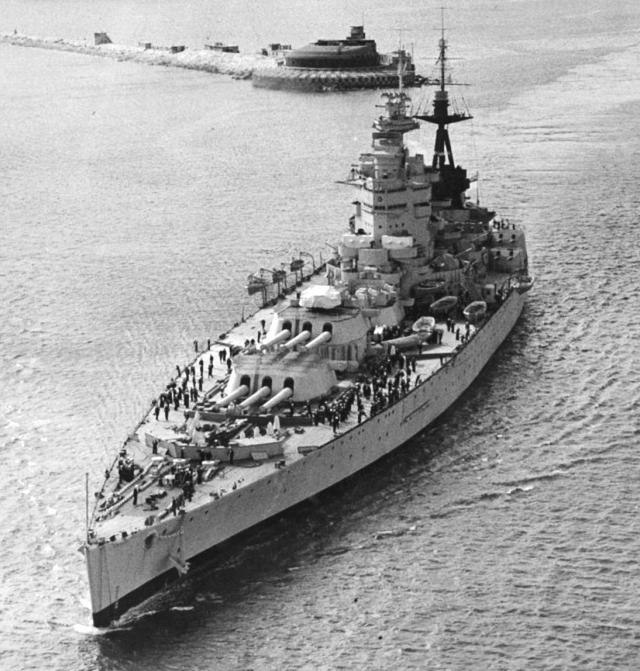
The sharper-eyed amongst you have already noticed the obvious difference.
more...
And then there's me. I'm a weirdo, because my favorite battleship class is one that few people know or (historically) care about. You see, I'm a fan of the Nelsons.
I can hear you now: "The whichnow?" These:

The sharper-eyed amongst you have already noticed the obvious difference.
more...
Posted by: Wonderduck at
10:23 PM
| Comments (2)
| Add Comment
Post contains 1199 words, total size 9 kb.
November 09, 2010
Warbird Up
In the comments of my post on the paddlewheel aircraft carrier Wolverine, reader The Old Man asked "How many WW2 carrier training birds are on the bottom of the Great Lakes and perhaps could be salvaged?"
Well, as of Monday afternoon the answer is "one fewer," as salvers brought up a doozie.
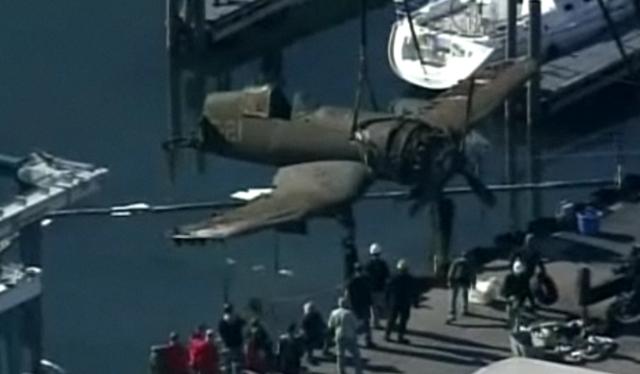
It's a Corsair, but not just any Corsair. That right there is the world's only known surviving F4U-1, the first marque of the bent-wing bird. It was sometimes known as a "Birdcage Corsair" for the latticework framing of the cockpit.
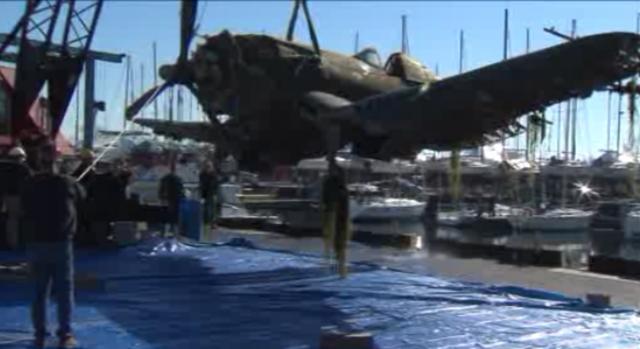
On June 12th, 1943, Ensign CH Johnson tried to land F-21 on the deck of the Wolverine. Losing sight of the LSO on approach, a common enough occurrence for the long-nosed Corsair, Ensign Johnson took a wave-off and, applying power, began to peel off to the left. Unfortunately, he had settled enough that his tailhook caught a wire, slamming the plane down onto the deck hard enough to split the rear fuselage from the rest of the Corsair. The tailhook assembly was ripped free of the plane as well. Both chunks of the F4U fell overboard and sank, though the front section stayed afloat long enough for Ensign Johnson to escape without harm.
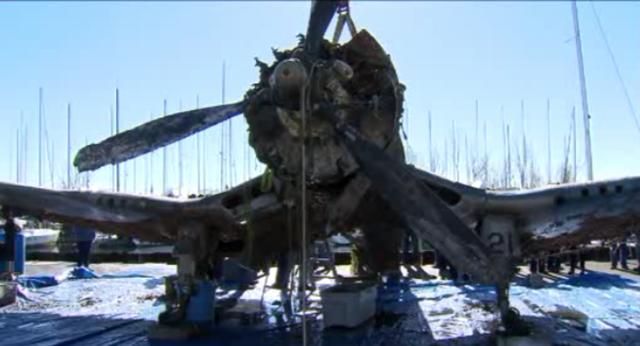
The plane is in remarkably good shape for having been submerged in Lake Michigan for 67 years. The underside is coated with zebra mussels, a common enough problem in the Great Lakes these days. There is rust, of course, but the structure of the Corsair is wholly intact. Indeed, the salvers brought up both pieces of the plane. The only bit missing? The tailhook assembly. Eventually, the F4U-1 is destined for the National Navy Aviation Museum in Pensacola, FL.
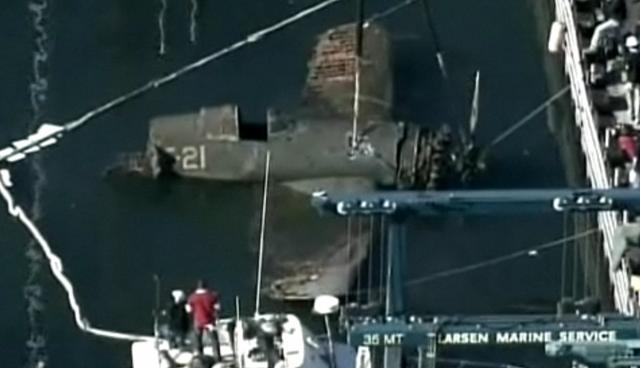
The salvage company that performed the rescue, A&T Recovery, says that there's at least 80 more warbirds sitting on the bottom of Lake Michigan, many of which are within 50 miles of Chicago. Almost all of them are Dauntlesses and Wildcats of various types. The F4U wasn't seen in the air above Lake Michigan, as the Wolverine and Sable were really not big enough to handle them comfortably. It may have been there as part of an attempt to requalify the Corsair for carrier operations, as the type had already been limited to ground-based squadrons in late 1942.
While Ensign Johnson got away unharmed from this crash, he wasn't so lucky later. He was killed in a midair collision over Hawaii on Thanksgiving Day, 1943.
Well, as of Monday afternoon the answer is "one fewer," as salvers brought up a doozie.

It's a Corsair, but not just any Corsair. That right there is the world's only known surviving F4U-1, the first marque of the bent-wing bird. It was sometimes known as a "Birdcage Corsair" for the latticework framing of the cockpit.

On June 12th, 1943, Ensign CH Johnson tried to land F-21 on the deck of the Wolverine. Losing sight of the LSO on approach, a common enough occurrence for the long-nosed Corsair, Ensign Johnson took a wave-off and, applying power, began to peel off to the left. Unfortunately, he had settled enough that his tailhook caught a wire, slamming the plane down onto the deck hard enough to split the rear fuselage from the rest of the Corsair. The tailhook assembly was ripped free of the plane as well. Both chunks of the F4U fell overboard and sank, though the front section stayed afloat long enough for Ensign Johnson to escape without harm.

The plane is in remarkably good shape for having been submerged in Lake Michigan for 67 years. The underside is coated with zebra mussels, a common enough problem in the Great Lakes these days. There is rust, of course, but the structure of the Corsair is wholly intact. Indeed, the salvers brought up both pieces of the plane. The only bit missing? The tailhook assembly. Eventually, the F4U-1 is destined for the National Navy Aviation Museum in Pensacola, FL.

The salvage company that performed the rescue, A&T Recovery, says that there's at least 80 more warbirds sitting on the bottom of Lake Michigan, many of which are within 50 miles of Chicago. Almost all of them are Dauntlesses and Wildcats of various types. The F4U wasn't seen in the air above Lake Michigan, as the Wolverine and Sable were really not big enough to handle them comfortably. It may have been there as part of an attempt to requalify the Corsair for carrier operations, as the type had already been limited to ground-based squadrons in late 1942.
While Ensign Johnson got away unharmed from this crash, he wasn't so lucky later. He was killed in a midair collision over Hawaii on Thanksgiving Day, 1943.
Posted by: Wonderduck at
10:05 PM
| Comments (6)
| Add Comment
Post contains 411 words, total size 3 kb.
<< Page 1 of 1 >>
25kb generated in CPU 0.0138, elapsed 0.0824 seconds.
46 queries taking 0.0756 seconds, 169 records returned.
Powered by Minx 1.1.6c-pink.
46 queries taking 0.0756 seconds, 169 records returned.
Powered by Minx 1.1.6c-pink.









